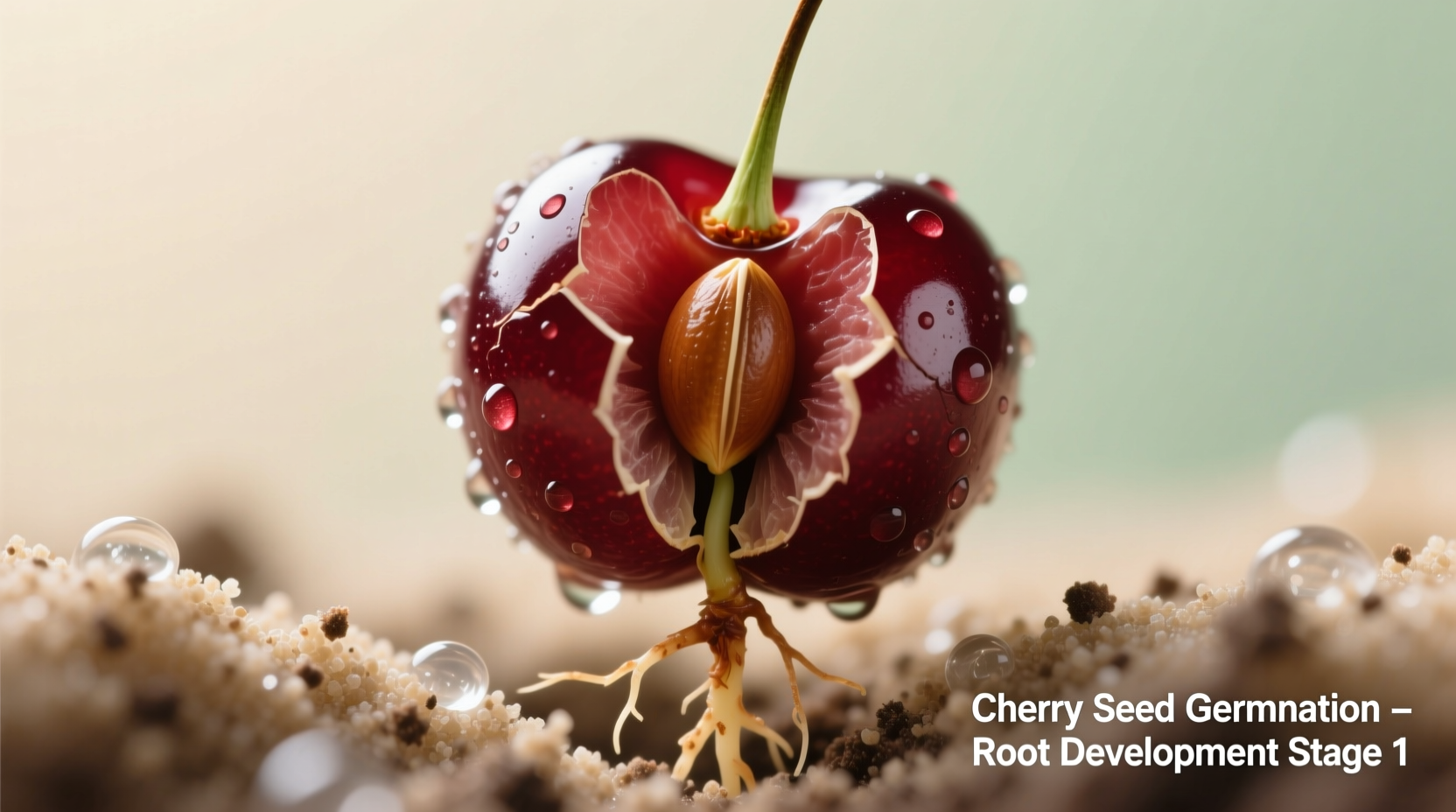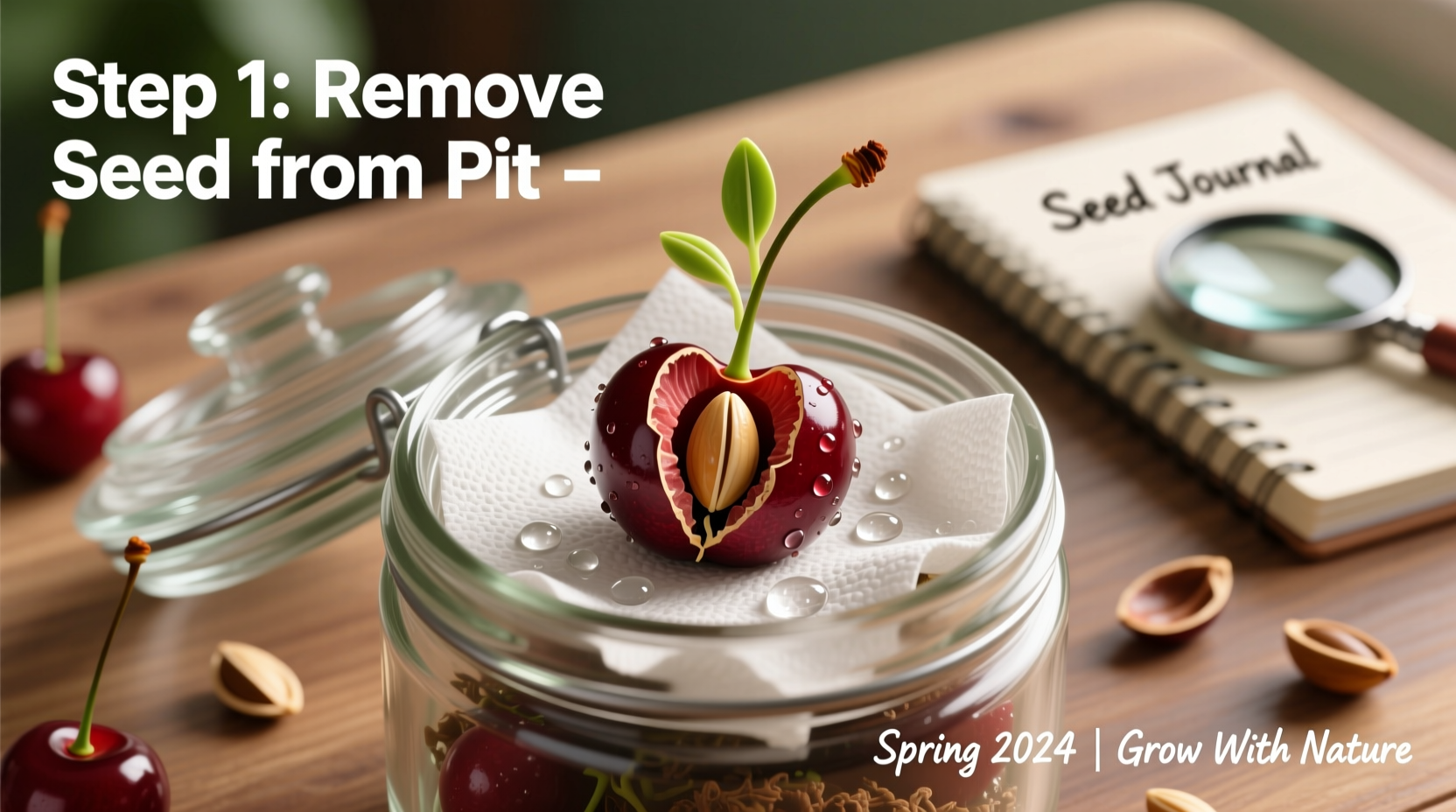Your Path to Growing Cherry Trees from Seed
Imagine harvesting your own cherries from a tree you grew from a single seed. While it takes patience—typically 7-10 years to bear fruit—growing cherry trees from seed connects you to nature's cycle in a deeply rewarding way. This guide delivers exactly what you need to know to successfully sprout cherry seeds, avoiding common pitfalls that cause most beginners to fail.
What You'll Actually Need to Get Started
Before diving in, gather these essential items. Many tutorials skip mentioning that not all cherry seeds are equally viable. Fresh seeds from locally grown cherries typically have higher germination rates than store-bought fruit, which may have been refrigerated improperly.
| Essential Item | Why It Matters | Pro Tip |
|---|---|---|
| Fresh cherry pits | Store-bought cherries often have lower germination rates | Use seeds from organic, locally grown cherries when possible |
| Refrigerator with stable temperature | Fluctuating temperatures disrupt stratification | Use a dedicated mini-fridge if possible |
| Moisture-retentive growing medium | Seeds need consistent moisture without drowning | Mix equal parts peat moss and perlite |
The Cherry Seed Sprouting Timeline: What Really Happens
Understanding the biological process helps you troubleshoot issues. Cherry seeds have built-in dormancy mechanisms that prevent premature sprouting. This evolutionary adaptation ensures seeds only germinate when conditions are right.
| Stage | Duration | Critical Success Factors |
|---|---|---|
| Cleaning & Drying | 3-7 days | Complete moisture removal prevents mold during storage |
| Cold Stratification | 90-140 days | Temperature must stay between 33-41°F (1-5°C) consistently |
| Germination | 2-8 weeks | Soil temperature above 65°F (18°C) triggers growth |
Step-by-Step: Sprouting Cherry Seeds Successfully
1. Selecting and Preparing Cherry Seeds
Choose seeds from fully ripe cherries. Avoid seeds from canned or preserved fruit, as processing destroys viability. Carefully crack open the pit using pliers (not a hammer, which damages the seed inside). Remove the almond-shaped seed inside without nicking it.
2. The Critical Cold Stratification Process
This mimics winter conditions that break seed dormancy. Place seeds in a zip-top bag with slightly damp peat moss or vermiculite. Squeeze out excess air and label with date and cherry variety. Store in your refrigerator's crisper drawer—not the freezer.
According to the USDA Agricultural Research Service, sweet cherries (Prunus avium) require 120-140 days of cold treatment, while sour cherries (Prunus cerasus) need only 90-100 days. Check monthly for mold; if found, rinse seeds and replace the medium.
3. Planting Your Stratified Seeds
After stratification, fill 4-inch pots with seed starting mix. Plant seeds 1 inch deep, water thoroughly, and place in a warm location (70-75°F / 21-24°C). Keep soil consistently moist but not soggy. Germination typically occurs within 2-8 weeks.

Why Your Cherry Seeds Might Not Sprout (And How to Fix It)
Even with perfect technique, cherry seed germination rates rarely exceed 50%. The Oregon State University Extension Service reports that genetic variability means some seeds simply aren't viable. Here's how to troubleshoot common issues:
- No sprouting after 8 weeks: Return seeds to stratification for another 30 days—some require extended cold treatment
- Mold during stratification: Seeds were too wet; rinse and replace medium with drier mix
- Seeds sprout then die: Likely damping-off disease; use sterile potting mix next time
Realistic Expectations for Cherry Seedlings
Understanding what happens after sprouting prevents disappointment. Most cherry trees grown from seed won't produce fruit identical to the parent tree due to cross-pollination. The Royal Horticultural Society notes that seed-grown cherries often require grafting with a known variety to produce desirable fruit.
During the first year, focus on strong root development rather than fruit production. Keep seedlings in partial shade for the first summer, gradually increasing sun exposure. Water deeply but infrequently to encourage deep roots. Protect from extreme temperatures—cherry seedlings tolerate mild frost but not hard freezes.
Advanced Tips for Higher Success Rates
Professional growers use these techniques to improve germination:
- Pre-soak seeds in room-temperature water for 24 hours before stratification
- Add a small amount of hydrogen peroxide to the stratification medium to prevent mold
- Use bottom heat (75°F / 24°C) during germination to speed up the process
- Plant multiple seeds—at least 5-10—to increase chances of successful sprouts
Remember that patience is essential. The University of California Cooperative Extension confirms that cherry trees grown from seed typically take 7-10 years to bear fruit, compared to 3-5 years for grafted trees. But the satisfaction of growing your own tree from a single seed makes the wait worthwhile.











 浙公网安备
33010002000092号
浙公网安备
33010002000092号 浙B2-20120091-4
浙B2-20120091-4